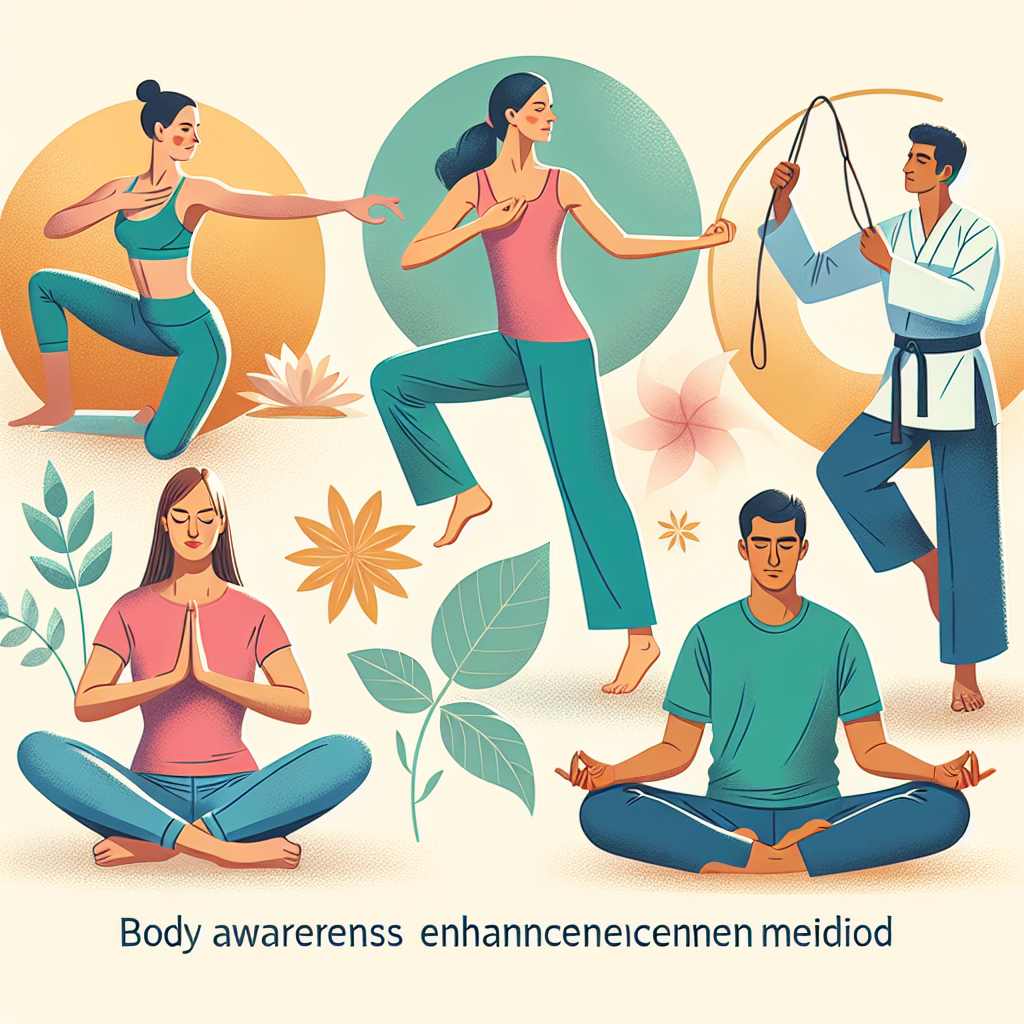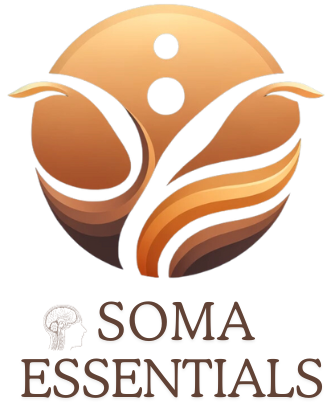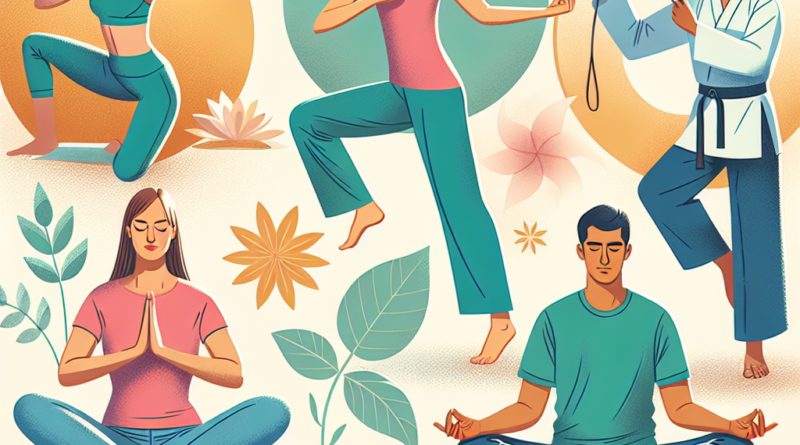What Are Some Techniques Or Exercises To Develop Body Awareness?
Journey on a voyage of self-discovery as you explore the landscape of your own body; home to a marvel of biological processes that often go unnoticed. The article ‘What Are Some Techniques Or Exercises To Develop Body awareness?’ serves as your guided tutorial, tracing the contours of your being and illuminating the many ways you can synchronize mind and body for enhanced self-awareness. Through a myriad of effective yet simple exercises and techniques focused on boosting body consciousness, you are empowered to nurture a deeper connection with your physical self while fostering heightened consciousness about your body’s incredible internal workings and subtle external expressions. Say goodbye to autopilot and embrace the exhilarating sensation of being fully present within your own frame.
Understanding Body Awareness
Definition of body awareness
Body awareness can be defined as the continuous internal process of being conscious of one’s physical self, its movements, positions, natural rhythms, and processes. It is an integral part of the proprioceptive system, or what we might call our “sixth sense,” a system that is essential for movement control and coordination. It plays a pivotal role in both our physical and mental spaces subtly guiding our actions and emotions.
Importance of body awareness
Body awareness is considerably important. A heightened sense of body awareness helps you better understand your body and interpretation of internal signals. This can be immensely beneficial for acknowledging your needs, identifying potential health issues, and making necessary changes to enhance well-being. It can also foster self-confidence, improve coordination, and reduce injuries by enabling you to move intentionally and with care.
How body awareness impacts well-being and physical health
A sound body awareness contributes to both physical health and mental well-being. Physically, it can help in posture correction, coordination, balance, and reducing injury risks. It can surface nuances of ill-being, helping one avert severe health issues. Psychologically it can foster a positive body image, self-esteem, and reduce anxiety, stress, and improve emotional understanding and regulation.
Ways to develop body awareness
Developing body awareness demands regular practice and dedication. Meditation, Yoga, Tai Chi, Dance, Pilates, Active Listening, integrated mind-body therapies, attention to nutrition, and good sleep hygiene can significantly enhance body awareness. Regular body scans, mindfulness activities, and exercises like balancing, dancing and yoga that involve a wide range of movements are also useful in promoting body awareness.
Meditation and Body Awareness
Mindfulness meditation and body awareness
Mindfulness meditation bolsters body awareness. Through stillness and concentration on breathing, one learns to bring their attention, without judgement, to their body. Observing respiration, heartbeats, physical sensations, tension and relaxation all contribute towards an improved understanding of one’s body.
Techniques of meditation improving body awareness
Meditation techniques such as body scanning, mindful breathing and loving kindness meditation promote body awareness. Body scan involves active attention to different body parts, sequentially, enhancing sensation perception and understanding. Mindful breathing helps engage with the natural rhythm of the body, allowing better stress management and emotional balance.
Benefits of meditation to body awareness
Meditation can foster relaxation, leading to decreased muscle tension and better pain management. It enhances focus, thereby improving motor control and coordination. It can also make one emotionally resilient and less reactive to stress or predicament allowing them better control over their life.
How to establish a meditation practice
Establishing a meditation practice requires a quiet space, a suitable posture, and a point of focus. Starting with short periods and gradually increasing the time can be helpful. Consistency is key. Acknowledging wandering thoughts and guiding the attention back to the focus boosts mental integrity.

Yoga and Body Awareness
Origin of Yoga and its relation to body awareness
Yoga, with its ancient roots in India, aims at harmonizing the body, mind and spirit. It encourages inward contemplation and physical discipline, leading to heightened body awareness. The poses or asanas along with breath control or pranayama form an integral part of this process.
Different Yoga poses that can help develop body awareness
Several yoga poses like the Mountain Pose, Warrior Series, Tree Pose, and Child’s Pose are effective for cultivating body awareness. These poses challenge balance, strength and flexibility, obliging mindful movement and focused attention on the body.
Breathing techniques in Yoga
Breathing techniques or ‘Pranayama’ in yoga is exceedingly pivotal. It draws attention to the breath, directing focus to the body. Techniques like ‘Ujjayi’, ‘Anulom-Vilom’, and ‘Kapalbhati’ are popular for their stimulating effects on awareness.
Benefits of Yoga for body awareness
Yoga fosters not only physical health but also psychological well-being. It can improve posture, coordination, and pain tolerance physically. Psychologically, it enhances cognitive functioning, reduces stress, anxiety and boosts emotional regulation.
Tai Chi and Body Awareness
Introduction to Tai Chi and its links to body awareness
Tai Chi, an ancient Chinese martial art form, accentuates smooth, fluid movements, and deep breathing promoting both physical and mental harmony. It is an excellent modality for improving body awareness, balanceand coordination.
Practices in Tai Chi enhancing body awareness
Tai Chi routines imbibe slow, intentioned movements along with deep, mindful breathing that enhances consciousness about one’s body. The careful execution of these movements aids in a greater understanding of body mechanics.
Physical benefits of Tai Chi
Physically, Tai Chi can enhance strength, flexibility, coordination, balance, and cardiovascular fitness. It aids in chronic pain and disorder management like heart disease, arthritis, and Parkinson’s.
Mental benefits of Tai Chi
Mentally Tai Chi helps reduce stress, anxiety, and promotes better sleep. It fosters emotional well-being, improves cognitive function, and brain health.

Dance and Body Awareness
Different dance styles for promoting body awareness
Various dance styles like ballet, contemporary, jazz, and salsa hone body awareness by emphasizing rhythm, control, and coordination. Improv dance also allows free-flowing movement deepening body understanding.
Role of Music and rhythm in enhancing body awareness
Music and rhythm guide the body, stimulating deliberate and coordinated movement. Engaging with rhythm can foster a better understanding and control of body movement.
Physical benefits of dancing
Dancing is a great cardiovascular activity that builds strength, endurance and flexibility. It improves coordination, balance, and posture while offering the joy of physical expression.
Emotional benefits of dancing
On an emotional level, dancing is therapeutic. It boosts mood, reduces stress, anxiety, and fosters emotional expression.
Pilates for Body Awareness
Brief of Pilates and its focus on body awareness
Pilates, a physical fitness system developed by Joseph Pilates, aims at strength, flexibility, and body awareness. It supports mindful movement accentuated with controlled breathing.
Various Pilates exercises for body awareness
Exercises like ‘The Hundred’, ‘Plank to Push up’, and ‘Scissor’ test strength, coordination, and enable body understanding. The mat and reformer Pilates also intensively promote body awareness.
Physical benefits of Pilates
Pilates can improve strength, flexibility, postural alignment, and body composition. It aids injury recovery and management of chronic conditions.
Mental benefits of Pilates
Mentally, Pilates promotes focus, reduces stress, and nurtures mind-body coordination.
Mind-Body Therapies
Defining mind-body therapies
Mind-Body therapies are holistic practices that enhance well-being by fostering the interaction of mind, body, and spirit. They believe in the power of mind affecting physical functioning and promoting health.
Common types of mind-body therapies
Common mind-body therapies include Yoga, Tai Chi, Qigong, meditation, hypnosis, biofeedback, and guided imagery. These focus on fostering a better understanding and control over the body through mental power.
Role of mind-body therapies in nurturing body awareness
Mind-body therapies through cultivating a strong mind-body connection can induce a greater engagement with the body. This elevates body awareness, understanding and control over its functioning.
Benefits of mind-body therapies
Mind-body therapies can reduce pain, improve sleep, enhance physical function, and promote mental well-being by reducing stress, anxiety, improving mood, and cognitive function.
Practicing Active Listening to Your Body
Explaining active listening in the context of body awareness
Active listening to your body refers to tuning into the body’s needs, signals, and messages with attention. It involves observing and understanding signs like hunger, fatigue, or tension with curiosity and without judgement.
Techniques to practice active listening to your body
To actively listen to your body, you need to cultivate mindfulness where you intentionally focus on your body’s sensations. Indulging in quiet introspection, consistent check-ins, and a meditation routine can help.
Benefits of active listening to your body
Active listening facilitates early detection of health problems, better stress and emotion regulation, improved eating and sleep habits and fosters well-being.
Challenges in cultivating the practice of listening to your body
Listening to your body can be challenging with common hindrances like disconnection with self, preoccupation with external stimuli or ignoring signals due to time constraints or societal norms. It requires practice, patience, and a non-judgmental approach.
Role of Nutrition in Body Awareness
Importance of nutrition for body awareness
Nutrition and body awareness go hand in hand. Attuning to hunger and fullness cues, understanding body’s reaction to certain foods, and making mindful choices can enhance physical health and foster body understanding.
Understanding hunger and satiety signals for body awareness
Listening to hunger and satiety signals is a part of intuitive eating that promotes body awareness. It involves eating when you’re genuinely hungry and stopping when satiated.
How eating habits can reflect your body awareness
Your eating habits say a lot about your body awareness. Mindful eating, where you savor each bite, is an example of significant body awareness. Eating on the basis of emotional cues points to reduced body awareness.
Choosing whole foods for better body awareness
Choosing whole foods, rich in nutrition, can impact how we feel and perform physically. Being aware of these effects promotes body awareness.
Sleep and Body Awareness
Connection between sleep and body awareness
Sleep and body awareness are intricately linked. The body’s circadian rhythm, its natural sleep-wake cycle, is an internal process you must tune into. Fostering good sleep hygiene can heighten body awareness.
Studying sleep patterns for better body awareness
To enhance body awareness, it’s essential to watch sleep patterns. Being aware of how much sleep you need, identifying disruptions in sleep, or understanding the causes of insomnia can support body awareness.
Importance of restful sleep for body awareness
Restful, quality sleep is rejuvenating. It helps physical recovery, boosts cognition, mood, and motivation- inevitably enhancing awareness.
Tips for improving sleep quality for body awareness
Improving sleep hygiene includes maintaining regular sleep-wake timings, ensuring a sleep-conducive environment, managing stress, and limiting caffeine, especially close to bedtime. Establishing these habits can support body awareness.
In the journey of body awareness, remember small steps matter. Every effort you make brings you closer to understanding your body better. Embrace the process and trust its potential to nurture your health and well-being.

